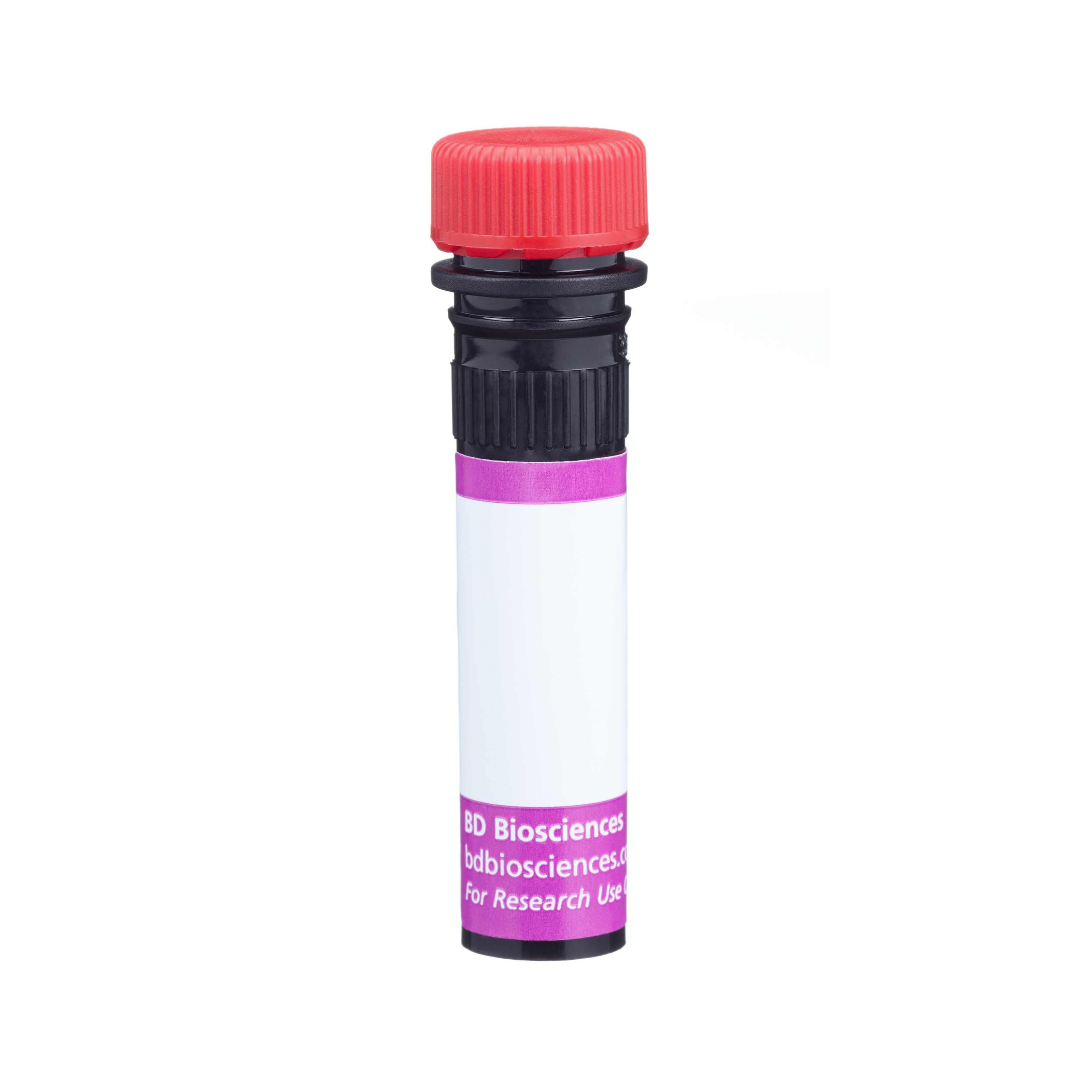The 8D7 monoclonal antibody recognizes Asialoglycoprotein receptor 1 (ASGPR 1), also known as Hepatic lectin H1 (HL-1). ASGPR 1 is an approximately 42 kDA type II integral membrane protein that is expressed on the surface of hepatic cells. It is expressed by hepatocytes on the sinusoidal-lateral plasma membrane but not on the bile canalicular membrane. ASGPR 1 plays a role in serum glycoprotein homeostasis. It functions as a subunit of the Asialoglycoprotein receptor (ASGPR) complex that binds, internalizes, and transports various glycoproteins for lysosomal degradation. The receptor may also promote hepatic infection by the binding and uptake of various viruses. The immunogen used to generate the 8D7 hybridoma was rat liver membrane extracts. Rat ASGPR consists of three polypeptide subunits (Rat hepatic lectin 1-3 (RHL1-3). The 8D7 antibody has been shown to react with a subunit-specific epitope on RHL-1. Clone 8D7 cross-reacts with human ASGPR 1.
The antibody was conjugated to BD Horizon™ BV711 which is part of the BD Horizon Brilliant™ Violet family of dyes. This dye is a tandem fluorochrome of BD Horizon BV421 with an Ex Max of 405-nm and an acceptor dye with an Em Max at 711-nm. BD Horizon BV711 can be excited by the violet laser and detected in a filter used to detect Cy™5.5 / Alexa Fluor® 700-like dyes (eg, 712/20-nm filter). Due to the excitation and emission characteristics of the acceptor dye, there may be moderate spillover into the Alexa Fluor® 700 and PerCP-Cy5.5 detectors. However, the spillover can be corrected through compensation as with any other dye combination.






